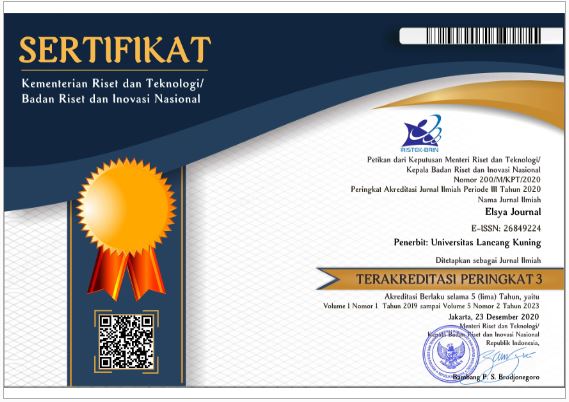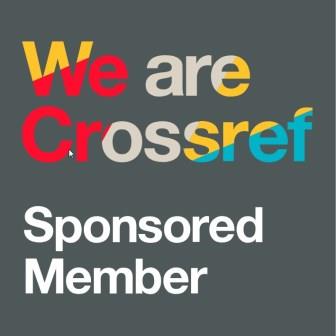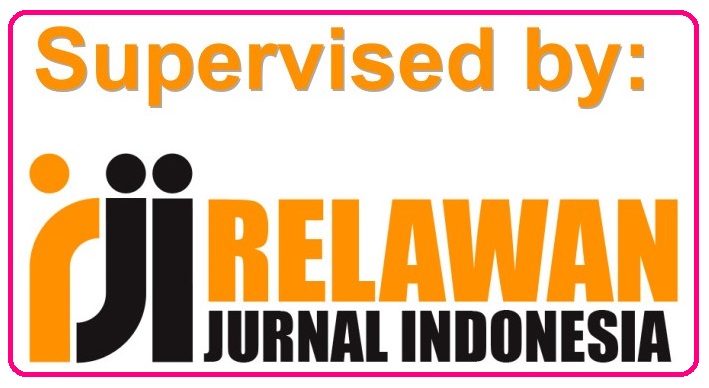Discovering the Pattern of Pop Song Artist’s Word Formation Processes for Slangs
Abstract
Songs is one of the most popular creations of human language, but linguistic study of this medium is still limited. One popular trend is to study the slangs in songs, but previous studies often used a single song or albums with little data, thus this study aims to explore the word formation of slangs in a pop album known for its numerous slangs in each song, namely the album Heaven & Hell by Ava Max. This study is descriptive qualitative research. The data is the lyrics of the 15 songs of the album which were analysed with content analysis to identify the slang word formation processes. Of the total 545 slangs, results found five types of processes: contraction, shortening, blending, clipping and compounding. Contraction is the most dominant type by a huge margin (77%), which is significantly different with the majority of previous studies’ conclusion that clipping is the most dominant type. This study offers a new insight by extending the amount of data. Similar studies in the past have mostly conducted this study on less than 200 data of slangs in a single song or a selection of a few songs in an album, while this study included all 15 songs in an album to obtain more than 500 data and found the pattern of dominant types of slang word formation process to be different than what has been reported over the years.
Downloads
References
AbuSa'aleek, A. O. (2015). Internet linguistics: A linguistic analysis of electronic discourse as a new variety of language. International Journal of English Linguistics, 5(1), 135.
Ackerman, M., & Loker, D. (2017, April). Algorithmic songwriting with alysia. In International conference on evolutionary and biologically inspired music and art (pp. 1-16). Springer, Cham.
Aisyah, S., & Larasati, A. (2021). An Analysis of Slang Word in Avril Lavigne Song Lyrics “Head Above Water”. JELT: Journal of English Language Teaching, 5(2), 180-187.
Antari, N. K. R., Jendra, I. I., & Winartha, I. G. N. (2021). Types of Slang Words in The Song Lyrics by Cardi B in The Invasion of Privacy Album. ELYSIAN JOURNAL: English Literature, Linguistics and Translation Studies, 1(3), 1-10.
Ardhyanti, S. V., & Supriyatiningsih, S. (2020). Figurative Language Analysis In Celine Dion’s Song Lyrics Falling Into You Album. Project (Professional Journal Of English Education), 3(1), 11-19. http://dx.doi.org/10.22460/project.v3i1.p11-19
Babanoğlu, M. P. (2017). A corpus-based study on the use of contractions by EFL learners in argumentative essays. International Journal of Applied Linguistics and English Literature, 6(2), 56-62. https://doi.org/10.7575/10.7575/aiac.ijalel.v.6n.2p.56
Berg, T. (2017). Compounding in German and English: A quantitative translation study. Languages in Contrast, 17(1), 43-68. https://doi.org/10.1075/lic.17.1.03ber
Boichuk, M. I. (2021). Shortenings: clipping, acronyms and blending as productive ways of forming religious lexis in the English language. Science and Education a New Dimension. Philology, (73), 248.
Budasi, I. G., & Bhuwana, I. P. A. (2020). Analysis of Slang Words Formation Found in the Lyrics of Drake’s Songs. k@ ta, 22(1), 10-16. https://doi.org/10.9744/kata.22.1.10-16
Cougar-Hall, P., West, J. H., & Hill, S. (2012). Sexualization in lyrics of popular music from 1959 to 2009: Implications for sexuality educators. Sexuality & Culture, 16(2), 103-117. https://doi.org/10.1007/s12119-011-9103-4
Crystal, D. (2008). Txting: The gr8 db8. Oxford: Oxford University Press.
Daniel, A. (2018, January). Clipping as morphology: Evidence from Japanese. Arts.
Derin, T., Deliani, S., Fauziah, N., Afifah, N., & Hamuddin, B. (2019). Indonesians’ Tendency to Refer Abbreviation as Acronym: Types of Abbreviation as Word Formation Process. Globish: An English-Indonesian Journal for English, Education, and Culture, 8(2), 76-85.
Dewi, E. N. F., Hidayat, D. N., & Alek, A. (2020). Investigating figurative language in “Lose You to Love Me” song lyric. Loquen: English Studies Journal, 13(1), 6-16. http://dx.doi.org/10.32678/loquen.v13i1.2548
Dewi, N. L. K., & Widiastuti, N. M. A. (2020). An Analysis of Slang Words in Song Lyrics Used in the Songs “That’s What I Like”,“Smoke On The Water”, and “Ch-Check It Out”. Udayana Journal of Social Sciences and Humanities (UJoSSH), 4(2), 85-90.
Diamond, S., Bermudez, R., & Schensul, J. (2006). What’s the rap about ecstasy? Popular music lyrics and drug trends among American youth. Journal of Adolescent Research, 21(3), 269-298.
Fischer, P., & Greitemeyer, T. (2006). Music and aggression: The impact of sexual-aggressive song lyrics on aggression-related thoughts, emotions, and behavior toward the same and the opposite sex. Personality and Social Psychology Bulletin, 32(9), 1165-1176.
Gatti, L., Özbal, G., Guerini, M., Stock, O., & Strapparava, C. (2015, June). Slogans are not forever: Adapting linguistic expressions to the news. In Twenty-Fourth International Joint Conference on Artificial Intelligence.
Harbi, S., Jabar, M. S. A., Nor, A. N. M., & Isa, N. M. (2019). ‘Hey, Jude! I Wanna Hold Your Hand’: Transitivity Process Analysis on Popular Songs by The Beatles. International Journal of Language Education and Applied Linguistics, 45-54. https://doi.org/10.15282/ijleal.v9.301
Haspo, F. C., & Rosa, R. N. (2018). An analysis of slang word in song lyrics Eminem on album Kamikaze. English Language and Literature, 7(4).
Ibrahim, I., Akib, M., & Hasyim, R. (2019). The analysis of figurative language in “Endless Love” song lyric. Lisan: Jurnal Bahasa Dan Linguistik, 8(2), 119-130. https://doi.org/10.33506/jbl.v8i2.464
Jespersen, O. (2020). Efficiency in linguistic change. Read Books Ltd.
Kostadinovska-Stojchevska, B., & Shalevska, E. (2018). Internet memes and their socio-linguistic features. European Journal of Literature, Language and Linguistics Studies, 2(4).
Listiani, H. (2015). An analysis of figurative language found on the song lyric by Taylor Swift’s “Speak Now” album (Doctoral dissertation, IAIN Salatiga).
MacKenzie, L. (2016). Production planning effects on variable contraction in English. University of Pennsylvania Working Papers in Linguistics, 22(2), 14.
Madanikia, Y., & Bartholomew, K. (2014). Themes of lust and love in popular music lyrics from 1971 to 2011. Sage Open, 4(3), 2158244014547179. https://doi.org/10.1177/2158244014547179
Madazizova, D. X. (2021). Some Linguistic Pecularities of Slang. Scientific progress, 2(7), 1277-1278.
Max, A. (2020, December 10). Heaven & Hell [Video Playlist]. YouTube. https://www.youtube.com/playlist?list=PL2piglgrN6HDSpJJJnb9UA1IRSToJ81oP
Muhammad, F., Hidayat, D. N., & Alek, A. (2021). An Analysis of Figurative Language in Maroon 5–Nobody’s Love Song Lyrics. Wanastra: Jurnal Bahasa dan Sastra, 13(1), 32-38.
Navarro-Cáceres, M., Oliveira, H. G., Martins, P., & Cardoso, A. (2020). Integration of a music generator and a song lyrics generator to create Spanish popular songs. Journal of Ambient Intelligence and Humanized Computing, 11(11), 4421-4437. https://doi.org/10.1007/s12652-020-01822-5
Nursolihat, S., & Kareviati, E. (2020). An analysis of figurative language used in the lyric of “a whole new world” by Zayn Malik and Zhavia Ward. PROJECT (Professional Journal of English Education), 3(4), 477-482.
Oliveira, H. G. (2015). Tra-la-lyrics 2.0: Automatic generation of song lyrics on a semantic domain. Journal of Artificial General Intelligence, 6(1), 87-110.
Olsen, K. N., Powell, M., Anic, A., Vallerand, R. J., & Thompson, W. F. (2020). Fans of violent music: The role of passion in positive and negative emotional experience. Musicae Scientiae. https://doi.org/10.1177/1029864920951611.
Pamungkas, K., & Abdulah, R. (2017). Linguistics-Based Pharmaceutical Product Naming Methods: A Morphological Study on Over the Counter Medicine Products in Indonesia. Asian Journal of Pharmaceutical and Clinical Research, 10, 108-112.
Pasaribu, B., Herman, and Hutahaean, D. T. (2020). Students’ Difficulties In Translating Narrative Text From English Into Indonesia At Grade VIII Of SMP Negeri 9 Pematangsiantar. Acitya: Journal of Teaching & Education, Vol. 2 No. 1 2020, PP. 12-18.
Pieschl, S., & Fegers, S. (2015). Violent lyrics= aggressive listeners?. Journal of Media Psychology, 28(1). https://doi.org/10.1027/1864-1105/a000144
Primack, B. A., Douglas, E. L., Fine, M. J., & Dalton, M. A. (2009). Exposure to sexual lyrics and sexual experience among urban adolescents. American journal of preventive medicine, 36(4), 317-323. https://doi.org/10.1016/j.amepre.2008.11.011
Qudeisat, L., & Rababah, L. (2021). A Linguistic Landscape Study Of Shop Signs In The Northern Part Of Jordan. Multicultural Education, 7(11), 538-548.
Rathcke, T. V., & Smith, R. H. (2015). Speech timing and linguistic rhythm: On the acoustic bases of rhythm typologies. The Journal of the Acoustical Society of America, 137(5), 2834-2845. https://doi.org/10.1121/1.4919322
Risdianto, F. (2016). Discourse Analysis of a Song Lyric Entitled" We Will Not Go Down”. Register Journal, 9(1), 90-105. https://doi.org/10.18326/rgt.v9i1.90-105
Seprina, V., & Anwar, D. (2018). AN ANALYSIS ON THE USE OF SLANG LANGUAGE IN NICKI MINAJ'S SONG LYRICS. Paradigma Lingua, 6(2).
Setiawati, W., & Maryani, M. (2018). An Analysis Of Figurative Language In Taylor Swift’s Song Lyrics. PROJECT (Professional Journal of English Education), 1(3), 261-268.
Siahaan, R., Herman, H., & Purba, C. N. (2021). Slang Word in Song Lyrics by “Billie Eilish on When We All Fall Asleep, Where Do We Go? Album”. Journal of English Language and Education, 6(1), 1-9. https://doi.org/10.31004/jele.v6i1.80
Son, S. H., Lee, H. Y., Nam, G. H., & Kang, S. S. (2019, February). Korean song-lyrics generation by deep learning. In Proceedings of the 2019 4th International Conference on Intelligent Information Technology (pp. 96-100).
Szell, M., Grauwin, S., & Ratti, C. (2014). Contraction of online response to major events. PloS one, 9(2), e89052. https://doi.org/10.1371/journal.pone.0089052
Tanamal, G. S. M., Juniartha, I. W., & Ariyaningsih, N. N. D. (2020). An analysis of slang word in song lyrics by travis scott on astroworld album. Journal of Language and Applied Linguistics, 1(2), 93-103.
Thao, N. V. and Herman. (2020). An Analysis of Deixis to Song Lyrics “My Heart Will Go on” by Celine Dion. Communication and Linguistics Studies. Vol. 6, No. 2, 2020, pp. 23-26.
Thompson, W. F., Geeves, A. M., & Olsen, K. N. (2019). Who enjoys listening to violent music and why?. Psychology of Popular Media Culture, 8(3), 218. https://doi.org/10.1037/ppm0000184
Thotagamuwa, T. J. (2020). Influence of Technology in Creating a Linguistic Subculture. [Doctoral Disseration, University of Sri Lanka]. University of Sri Lanka Research Repository. http://220.247.247.85:8081/bitstream/handle/123456789/41521/Tharindu%20Jayanath%20Thotagamuwa.pdf?sequence=1
Toivanen, J., Toivonen, H., & Valitutti, A. (2013). Automatical composition of lyrical songs. In The Fourth International Conference on Computational Creativity.
Wijaya, R. C., Sukmaningrum, R., & Setyorini, A. (2021, October). An Analysis of Slang Words Used in Song Lyrics by Twenty One Pilots on Album Blurryface. In Undergraduate Conference on Applied Linguistics, Linguistics, and Literature (Vol. 1, No. 1, pp. 14-25).
Wright, C. L., & Rubin, M. (2017). “Get lucky!” Sexual content in music lyrics, videos and social media and sexual cognitions and risk among emerging adults in the USA and Australia. Sex education, 17(1), 41-56.
Yanchun & Yanhong. (2013). A Sociolinguistics Study of American Slang. Changchun: Changcun University of Science and Technology.
Yastanti, U., Suhendar, J., & Pratama, R. M. D. (2018). Figurative language in song lyrics of linkin park. Progressive Journal, 13(2), 95-106.
Yule, G. (2006). The Study of Language. London: Cambridge University Press.
Zaim, M. (2018). Shifting the system of Indonesian word formation: the study of morphology and sociolinguistics of acronyms, blending, and clipping. Center for Humanities Studies, 16(2), 248-262.
- Author retains the copyright and grants Elsya Journal the right of first publication of the work simultaneously licensed under the Creative Commons Attribution-ShareAlike 4.0 License that allows others to share the work with an acknowledgment of the work's authorship and initial publication in this journal
- The author is able to enter into separate, additional contractual arrangements for the non-exclusive distribution of the journal's published version of the work (e.g., post it to an institutional repository or publish it in a book) with the acknowledgment of its initial publication in this journal.
- The author is permitted and encouraged to post his/her work online (e.g., in institutional repositories or on their website) prior to and during the submission process, as it can lead to productive exchanges, as well as earlier and greater citation of the published work (See The Effect of Open Access).









 Elsya Journal is licensed under
Elsya Journal is licensed under 